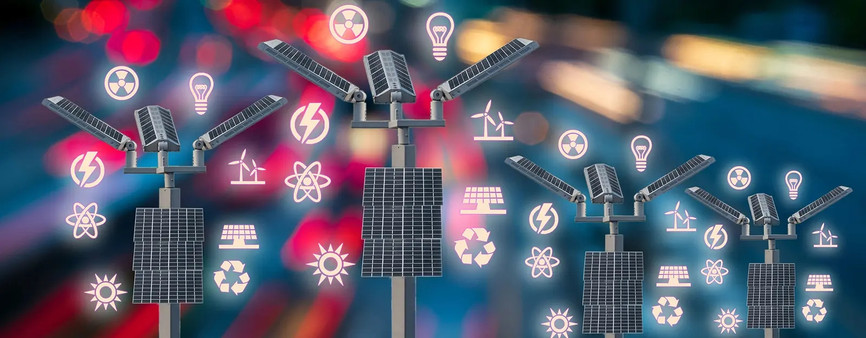Shining Brighter: Smart Poles for Smart Cities

We don’t give much thought to street lamps. They light our way but are capable of so much more. By incorporating cameras and sensors, smart streetlights or smart poles (without lights) have the potential to transform cities.
Community Engagement & Support
Smart poles can hold digital displays for city navigation, community events, emergency alerts, local news and traffic signaling. This information is useful for community engagement among city residents as well as tourists.
Cities such as Denver are using smart poles to supply 5G to their communities. 5G supports smart city wireless connectivity, improving IoT device efficiency and real-time response. Stronger mobile networks also mean faster, more connected community services, from city government to emergency response.
Smart poles can also serve as public Wi-Fi access points. Public Wi-Fi is an important economic tool for city residents that otherwise lack access to internet services. Tourists may use these zones to conveniently look up places of interests. Studies also show people spend more time in public spaces if they have easy internet access.
Energy Efficiency & Savings
Smart poles can be equipped with solar panels and used to power other devices, from electric vehicles in parking lots to mobile devices in public parks. The city of Los Angeles saves nearly $9 million a year since converting their streetlights to LED smart lights. The excess power and lower circuit stress enabled the city to install EV charging stations attached to the poles. The city later installed solar panels to collect additional energy to sell to the power grid.
Crime & Hazard Protection
Equipped with microphones, smart poles can detect gun shots or cries for help and automatically alert emergency services. Lamps respond to accidents by brightening and recording audio or video. In San Diego, police accessed streetlight camera footage in relation to 175 crimes in a little over a year’s time span. The footage served as critical evidence in 58 instances and saved the department thousands of employee hours.
Smarts poles can monitor environmental factors, like air quality, temperature, humidity, weather and seismic activity. Cities collect data on these factors to identify hot spots for air pollution, heat waves or seismic stress. In cases of severe weather, smart poles with loudspeakers deploy audible and/or SMS alerts.
Traffic & Parking Monitoring
Smart pole sensors and cameras can detect traffic accidents and send emergency alerts. They can also monitor traffic and regulate traffic lights to ease congestion. They can connect to smart roads and smart vehicles for data sharing and IoT synergy.
Smart poles can monitor parking lots with digital displays showing the number of open spaces. Smart poles with lights can illuminate areas where spots are available. Smart poles can also replace kiosks where patrons make payments or book spaces. Cameras on smart poles can catch parking violators and send alerts to authorities.
The Future of Smart Streetlights
Cities may be warming up to the idea of smart streetlights and their advantages. The smart pole market is expected to grow to $15.8 billion by 2025.
Categories:
